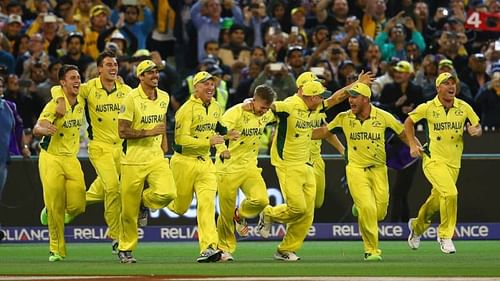
Has Australia's strategy of sticking with older cricketers ruined young talent?

Cricket Australia has a phobia of going for the gamble with rookies. It has increasingly becoming a trend with Cricket Australia (CA) to favour players above the age of 25 – veterans of the domestic league who are rewarded with a national call-up after having been ignored for a long time.
Surprisingly, this has become a successful ploy over a period of two decades. Even Australian cricket legends Steve Waugh, Alan Border and Mark Taylor are on the same page on this - they believe that the Sheffield Shield is not as competitive as it used to be.
Former Australian opener Simon Katich believes that there is plenty of talent which is not being fine-tuned for success. There is a school of thought that the best teams must have a healthy blend of experience and youth.
Cricket Australia’s policy has been to make players fight for every inch of that international space that it offers. Age becomes secondary – fitness remains the only criteria. And that is why we find Brad Haddin still diving behind the wickets at 38, Matthew Hayden quitting cricket at 41, Mike Hussey and Shane Warne playing their last Test at 38. A “doosra” – but a pathbreaking idea.
The most dominant side in last quarter-century
Australia, without an iota of doubt, has been the most dominant cricketing nation ever since the decline of the mighty Windies of the seventies & eighties – lifting the coveted World Cup crown 5 times. This proves that they always had a good core around which the others have rallied.
In the 90’s they had the riches of Mark Waugh, Mark Taylor, Steve Waugh, Shane Warne, Michael Bevan, Glenn McGrath and yes of course Ricky Ponting – and each one of them were well equipped to be world beaters. These icons could walk into any team of any era, they were that skilful. Spoilt for choices, talented players like Stuart McGill and even Matthew Hayden were sidelined. Youngsters, notwithstanding their promise, were never even considered for selection. Some cricketers would have been better off had they been born in a different era.
Then came the glorious decade of the 2000s, when they won two World Cup titles under the leadership of Ricky Ponting – one in the African continent and one in the Carribean. This also threw light on the fact that this Australian team had the arsenal to win out of their comfort zone. During this period, the core again comprised of players on the wrong side of 25.
Has the Aussie experiment succeeded?
It is not harsh to say that CA has not vested a lot of trust on youngsters coming through the ranks. This brings me to the moot question, “Has CA played the ‘one eyed deer’ and in the process ruined raw talent and careers?” The easiest counter to this would be – well, whatever it may be, the results have been taken good care off.
Perhaps the tactic of fielding players only who are battle-weary old hands might catch on with other teams later, but we will find that other teams have thought differently consistently.
Graeme Smith, in 2002, became the youngest to captain a side at the age of 21. Umpteen others were made captains of their respective nations thereafter like Tatenda Taibu, Prosper Utseya, Rajin Saleh, Shakib Al Hasan, Md. Ashraful, Jason Holder, Eoin Morgan and Mushfiqur Rahim.
Only 4 members of the World Cup-winning 2015 Australian squad were below 25. More astonishingly, not a single member of the 2007 and 1999 winning team and merely two players of the 2003 WC winning team were below the ‘25-bracket’.
In today’s age where ‘youth-empowerment’ is the buzzword, when youngsters are bubbling with energy raring to take on the world, where teams like India created a world beater called Sachin Tendulkar at 16 and when the entry age in international sport is dipping rapidly, does the Aussie experiment tell a story? Has the strategy succeeded against odds? Have they been able to swim against the tide? The answer is hell ‘Yes’.
It is pretty evident that the CA, despite having never promoted young blood, has tasted success continuously over a period of time whereas others who tried the counter theory of blooding youngsters did not succeed as well.